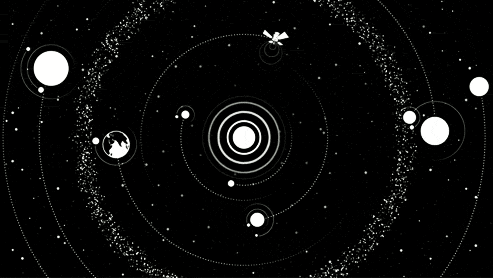Scientists Find Two Natural Genes In Our Cells That Can Combat HIV

Scientists Find Two Natural Genes in our Cells That Can Combat HIV
During the opening era of the AIDS epidemic, being diagnosed was a death sentence. Thanks to advances in medicine, it isn’t anymore. HIV is no longer a terminal illness; with treatment, an individual with HIV has the exact same life expectancy as someone without the disease.
However, it is still a devastating virus. The treatments have many side effects, and you will need to take the medicine for the rest of your life.
For years, scientists have been trying to find a way to effectively cure HIV/AIDS, but unfortunately, none yet have made that incredible leap. But new breakthroughs come each year, which slowly bring us closer to our goal.
Case in point, last month, researchers from the University of Massachusetts Medical School announced the discovery of proteins that naturally inhibit the human immunodeficiency virus. Surprisingly, they found these proteins in the cells in our immune system’s T cells, which are the cells that HIV attacks (specifically, it attacks CD4 positive T cells, which are white blood cells that are vital to fighting off infection).
Find out more at: http://futurism.com/links/scientists-find-two-natural-genes-in-our-cells-that-can-combat-hiv/
More Posts from Curiositytherover and Others




This is the follow-up to squine and cosquine, and I find students find it really cool. Are there any other shapes someone has done this for?

Inhabitat’s Week in Green: Paris climate talks, and more!

Russia will send these robots to space in place of humans
The anthropomorphic bot is a collaboration between robotics lab Android Technics and TsNIIMash, a Russian institute for building machines, according to Sputnik International. Alexander Permyakov, Director-General of Android Technics, told the news agency that these robots will be able to “completely replace human” in certain circumstances.
Follow @the-future-now

Liquid-metal terminators are generally something to be afraid of – but what if the substance was used to fight cancer instead of wiping out humanity?
That’s exactly what researchers in the US are working on, having developed a biodegradable liquid metal that can be used as a drug delivery technique to target cancer cells.
“The advance here is that we have a drug-delivery technique that may enhance the effectiveness of the drugs being delivered, can help doctors locate tumours, can be produced in bulk, and appears to be wholly biodegradable with very low toxicity,” said Zhen Gu, a biomedical engineer in a joint program at North Carolina’s State University and University at Chapel Hill. “And one of the advantages of this technique is that these liquid metal drug carriers – or ‘nano-terminators’ – are very easy to make.”
Continue Reading.

DJI’s drone safety system has you signing up to fly in some areas

This VR Film Puts You In The World Of A Blind Person

Humans might not be the only creatures that care about the welfare of other animals. Scientists are beginning to recognize a pattern in humpback whale behavior around the world, a seemingly intentional effort to rescue animals that are being hunted by killer whales.
Marine ecologist Robert Pitman observed a particularly dramatic example of this behavior back in 2009, while observing a pod of killer whales hunting a Weddell seal trapped on an ice floe off Antarctica. The orcas were able to successfully knock the seal off the ice, and just as they were closing in for the kill, a magnificent humpback whale suddenly rose up out of the water beneath the seal.
This was no mere accident. In order to better protect the seal, the whale placed it safely on its upturned belly to keep it out of the water. As the seal slipped down the whale’s side, the humpback appeared to use its flippers to carefully help the seal back aboard. Finally, when the coast was clear, the seal was able to safely swim off to another, more secure ice floe.
Read more
Read the study: Humpback whales interfering when mammal-eating killer whales attack other species: Mobbing behavior and interspecific altruism?





REAL LIFE LIGHTSABER ALERT!
The guy that made the real life version of Mjolnir has crafted another real version of a fictional weapon: a functioning lightsaber. Allen Pan made the fabled Jedi weapon out of an igniter, butane, methanol and acetone which creates a focused pillar of flame. It even makes real sounds! Now, of course this isn’t a conventional lightsaber and you shouldn’t try this at home but it’s awesome that somebody finally accomplished something close! GIVE THIS MAN A GRANT.

By 2020, there will be enough renewable energy to supply CHN, IND, and BRA combined.
Paris-based International Energy Agency (IEA) has predicted that by 2020, 26% of the world’s energy will come from renewable sources (solar, wind, hydro). The agency adds that the amount will be higher than the combined energy demands of country’s like China, India, and Brazil. The prediction was based on the assumption that in the next five years, 700 gigawatts will be added to the world’s current renewable energy capacity.
Read more at: http://futurism.com/links/by-2020-there-will-be-enough-renewable-energy-to-supply-chn-ind-and-bra-combined/
-
 suicidalschrei-blog liked this · 9 years ago
suicidalschrei-blog liked this · 9 years ago -
 jacetrash-blog liked this · 9 years ago
jacetrash-blog liked this · 9 years ago -
 supersourwoofwoofbud reblogged this · 9 years ago
supersourwoofwoofbud reblogged this · 9 years ago -
 supersourwoofwoofbud liked this · 9 years ago
supersourwoofwoofbud liked this · 9 years ago -
 balisongbutch reblogged this · 9 years ago
balisongbutch reblogged this · 9 years ago -
 surmai liked this · 9 years ago
surmai liked this · 9 years ago -
 donialltella liked this · 9 years ago
donialltella liked this · 9 years ago -
 fabulouslukeskywalker liked this · 9 years ago
fabulouslukeskywalker liked this · 9 years ago -
 negroonthemoon liked this · 9 years ago
negroonthemoon liked this · 9 years ago -
 ghostly2lighten reblogged this · 9 years ago
ghostly2lighten reblogged this · 9 years ago -
 ghostly2lighten liked this · 9 years ago
ghostly2lighten liked this · 9 years ago -
 lzjwj liked this · 9 years ago
lzjwj liked this · 9 years ago -
 darklyght11 reblogged this · 9 years ago
darklyght11 reblogged this · 9 years ago -
 darklyght11 liked this · 9 years ago
darklyght11 liked this · 9 years ago -
 kugi77 reblogged this · 9 years ago
kugi77 reblogged this · 9 years ago -
 mohralitywolf reblogged this · 9 years ago
mohralitywolf reblogged this · 9 years ago -
 mohralitywolf liked this · 9 years ago
mohralitywolf liked this · 9 years ago -
 naderqot liked this · 9 years ago
naderqot liked this · 9 years ago -
 9thbobcat reblogged this · 9 years ago
9thbobcat reblogged this · 9 years ago -
 nanerdalert liked this · 9 years ago
nanerdalert liked this · 9 years ago -
 thedeepblr-blog liked this · 9 years ago
thedeepblr-blog liked this · 9 years ago -
 boobpubes liked this · 9 years ago
boobpubes liked this · 9 years ago -
 ssuncertainty reblogged this · 9 years ago
ssuncertainty reblogged this · 9 years ago -
 curiositytherover reblogged this · 9 years ago
curiositytherover reblogged this · 9 years ago -
 makeastarshine liked this · 9 years ago
makeastarshine liked this · 9 years ago -
 makeastarshine reblogged this · 9 years ago
makeastarshine reblogged this · 9 years ago -
 thegodwotan liked this · 9 years ago
thegodwotan liked this · 9 years ago -
 itsnevernothing reblogged this · 9 years ago
itsnevernothing reblogged this · 9 years ago -
 ca1iban liked this · 9 years ago
ca1iban liked this · 9 years ago -
 fleurgourmet reblogged this · 9 years ago
fleurgourmet reblogged this · 9 years ago -
 natgeo-covergirl liked this · 9 years ago
natgeo-covergirl liked this · 9 years ago -
 alxndrasplace reblogged this · 9 years ago
alxndrasplace reblogged this · 9 years ago -
 rastlinjames reblogged this · 9 years ago
rastlinjames reblogged this · 9 years ago -
 sophiaswebs-blog liked this · 9 years ago
sophiaswebs-blog liked this · 9 years ago -
 missexo-l liked this · 9 years ago
missexo-l liked this · 9 years ago -
 geekballin reblogged this · 9 years ago
geekballin reblogged this · 9 years ago